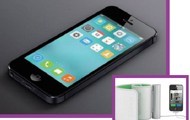Letter from a reader Accepting yourself! Here we go, wheelchairs!
My friends, do you still remember the little mermaid who became a bubble in the ocean in Anderson’s fairytale? What a beautiful and sad story it was! However, where did the story come from? When did the princess meet the Prince in the ocean for the first time? Why did she want to exchange her voice for the ability to walk on land? She was not able to walk (since she had a fish tail, she made a deal to have legs in exchange for her voice). It was not about having a good or bad disability. The little mermaid made her own choices. The point is that it became even harder for her to express herself and make herself understood when she was able to live on land but unfamiliar with human language.
Her fishlike tail represented who she was, rather than a defect that she was born with. However, she was so worried the Prince would not accept her, so she tried hard to change herself to fit in and behave like the humans. She foolishly made sacrifices for her true love. If she could not accept herself, how could the Prince accept her? For this reason, no matter what happened, the ending would be tragic.

Many children with physical disabilities are like the little mermaid princess. Despite their physical disorders, many of them make great efforts to do things, and intentional or not, they're influenced by standards set for people without disabilities. Their tremendous efforts and enormous sacrifices are aimed at gaining recognition from the people surrounding them. No matter how successful they are in the eyes of people without disabilities, they still feel frustration, regret and despair. In the end, they may be "beautiful", but that beauty is an illusion.
The Cartoon Shot of the last issue of Someone showed us a different version of the Mermaid Princess - Malaysia versus Denmark, painter versus writer, Lin Shaosheng versus Anderson – in the form of a cartoon rather than a fairy tale. In the cartoon version, Mr. Lin’s princess might have made a totally different choice. Against a white backdrop, the mermaid was portrayed in deep blue ink, without ocean and beaches. It goes without saying that a mermaid should be featured with a delicate face, pink lips, wavy hair and a graceful figure… but, stop!... It’s actually just a fantasy or stereotype. The little mermaid in the cartoon – round saucer-shaped eyes, full pink lips, gourd-shaped face, big breasts and wide hips, and mop-like hair - would undoubtedly disappoint you. Was she a crocodile princess or a mermaid princess? Yes, a mermaid princess. Did she find a prince or a frog? Who knows? Anyways, this mermaid would like to be on land as well, but didn’t want to exchange her beautiful voice for legs. But what could she do? The smart mermaid bent up her tail and sat in a wheelchair! Hands on the wheels! Ready for her prince!
The cartoon caption said, “Since she didn’t want to be foolish, the mermaid chose to use a wheelchair.” This was a smart decision. The mermaid was not only able to recognize and accept herself, but also she was a brave and clever girl. She strove to be herself based on her own strengths and weaknesses, rather than thinking her weaknesses were defects. No matter what happened, she was herself. I wish the princess, who loved herself in her wheelchair and bravely pursued her true love, blessings and happiness!






